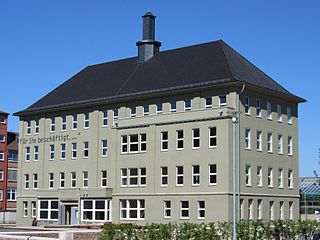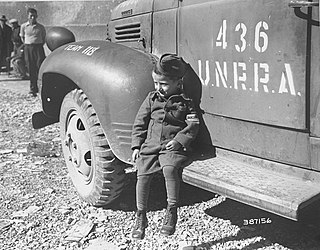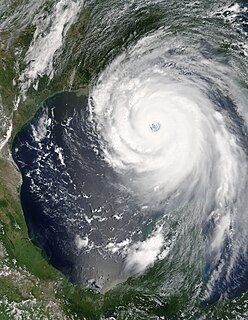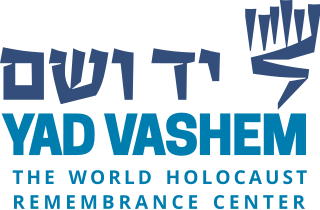
Nazi Germany built extermination camps during the Holocaust in World War II, to systematically murder millions of Jews. Others were murdered at the death camps as well, including Poles, Soviet POWs, and Roma. The victims of death camps were primarily killed by gassing, either in permanent installations constructed for this specific purpose, or by means of gas vans. Some Nazi camps, such as Auschwitz and Majdanek, served a dual purpose before the end of the war in 1945: extermination by poison gas, but also through extreme work under starvation conditions.

Parchment is a writing material made from specially prepared untanned skins of animals—primarily sheep, calves, and goats. It has been used as a writing medium for over two millennia. Vellum is a finer quality parchment made from the skins of young animals such as lambs and young calves.

Upon the rise of Adolf Hitler and the National Socialist German Workers Party in Germany, gay men and, to a lesser extent, lesbians, were two of the numerous groups targeted by the Nazis and were ultimately among Holocaust victims. Beginning in 1933, gay organizations were banned, scholarly books about homosexuality, and sexuality in general, were burned, and homosexuals within the Nazi Party itself were murdered. The Gestapo compiled lists of homosexuals, who were compelled to sexually conform to the "German norm".

Buchenwald was a Nazi concentration camp established on Ettersberg hill near Weimar, Germany, in July 1937. It was one of the first and the largest of the concentration camps within Germany's 1937 borders. Many actual or suspected communists were among the first internees.

Karl-Otto Koch was a mid-ranking commander in the SS of Nazi Germany who was the first commandant of the Nazi concentration camps at Buchenwald and Sachsenhausen. From September 1941 until August 1942, he served as the first commandant of the Majdanek concentration camp in occupied Poland, stealing vast amounts of valuables and money from murdered Jews. His wife, Ilse Koch, also took part in the notorious crimes at Buchenwald and Majdanek.

Ilse Koch was the wife of Karl-Otto Koch, commandant of the Nazi concentration camps Buchenwald (1937–1941) and Majdanek (1941–1943). In 1947, she became one of the first prominent Nazis tried by the U.S. military.

Ohrdruf concentration camp was a Nazi forced labor and concentration camp located near Ohrdruf, south of Gotha, in Thuringia, Germany. It was part of the Buchenwald concentration camp network and the first Nazi concentration camp liberated by U.S. troops.

Nazi Germany maintained concentration camps throughout the territories it controlled before and during the Second World War. The first Nazi camps were erected in Germany in March 1933 immediately after Hitler became Chancellor and his Nazi Party was given control of the police by Reich Interior Minister Wilhelm Frick and Prussian Acting Interior Minister Hermann Göring. Used to hold and torture political opponents and union organizers, the camps initially held around 45,000 prisoners. In 1933–1939, before the onset of war, most prisoners consisted of German Communists, Socialists, Social Democrats, Roma, Jehovah's Witnesses, homosexuals, and persons accused of 'asocial' or socially 'deviant' behavior by the Germans.

Identification of inmates in German concentration camps was performed mostly with identification numbers marked on clothing, or later, tattooed on the skin. More specialized identification was done with German concentration camp badges on the clothing and also with armbands.
During the 20th century, there were various alleged instances of soap being made from human body fat. During World War I it was claimed in the British press that the Germans had a corpse factory in which they used the bodies of their own soldiers to make glycerine and soap. During World War II it was believed that soap was being mass-produced from the bodies of the victims of Nazi concentration camps located in German-occupied Poland. During the Nuremberg trials evidence was presented that German researchers had developed a process for the production of soap from human bodies. The Yad Vashem Memorial has stated that the Nazis did not produce soap from Jewish corpses on an industrial scale, saying that rumors that soap from human corpses was mass-produced and distributed were deliberately used by the Nazis to frighten camp inmates. It is now known that Nazi Germany did produce soap from human corpses, but not on an industrial scale.

The conservation and restoration of parchment constitutes the care and treatment of parchment materials which have cultural and historical significance. Typically undertaken by professional book and document conservators, this process can include preventative measures which protect against future deterioration as well as specific treatments to alleviate changes already caused by agents of deterioration.

J.A. Topf and Sons was an engineering company, founded in 1878 in Erfurt, Germany by Johannes Andreas Topf (1816–1891). Originally, it made heating systems and brewing and malting equipment. Later, the company diversified into silos, chimneys, incinerators for burning municipal waste, and crematoria. During World War I it made weapons shells, limbers and other military vehicles. In World War II it also made weapons shells and aircraft parts for the Luftwaffe.
Nazi human experimentation was a series of medical experiments on large numbers of prisoners, including children, by Nazi Germany in its concentration camps in the early to mid 1940s, during World War II and the Holocaust. Chief target populations included Romani, Sinti, ethnic Poles, Soviet POWs, disabled Germans, and Jews from across Europe.
Several writers, including Jewish Nobel Prize laureate Isaac Bashevis Singer, and animal rights groups have drawn a comparison between the treatment of animals and the Holocaust. The comparison is regarded as controversial, and has been criticized by organizations that campaign against antisemitism, including the Anti-Defamation League (ADL) and the United States Holocaust Memorial Museum.

Joseph Schleifstein is a Polish-born American who survived Buchenwald concentration camp at the age of four, one of the youngest to survive the Holocaust. He was hidden by his father in a large sack, enabling him to avoid detection by SS guards when arriving at the camp. Other prisoners helped his father keep him hidden and Schleifstein survived until the Americans liberated the camp. After the war, Schleifstein and his parents emigrated to the United States. He did not discuss his wartime experiences for decades, even with his children. His case was discovered by chance in 1999 with the anniversary of the movie Life is Beautiful being celebrated. It was discovered Schleifstein's story was inspiration for the script. This led to a search for him and an eventual newspaper interview.

Chamber of the Holocaust is a small Holocaust museum located on Mount Zion in Jerusalem. It was Israel's first Holocaust museum.

Goethe Oak, is a name given to a number of oak trees in Germany that are referred to in this way because they allegedly bear some sort of connection to the poet Johann Wolfgang von Goethe.
Objects used in Jewish rituals are known collectively as Judaica. The conservation and restoration of Judaica takes into account the collective body of Jewish religious laws derived from the written and oral Torah known as halacha in order to properly care for these materials. This work involves identifying these objects and therefore knowing how any of these objects are traditionally handled, stored, exhibited, and generally cared for based on their use and significance.
Mark Jacobson may refer to:




















